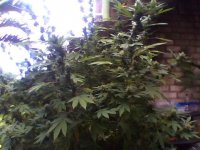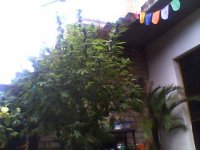BigWillyDee
Member
i have been experimenting on using a simple soil mix with nothing but compost for an entire outdoor grow.... everyone spends thousands of dollars every year on this or that and (in my opinion) isn't needed at all....
my soil mix is
1 part good rich jungle soil
1 part river sand
1 part good compost
i use this mix to grow from seed to harvest.. the only thing i do is topdress with a thick layer of compost once a month... the end
im curious if there are others who only use compost to grow.....
the proof
my soil mix is
1 part good rich jungle soil
1 part river sand
1 part good compost
i use this mix to grow from seed to harvest.. the only thing i do is topdress with a thick layer of compost once a month... the end
im curious if there are others who only use compost to grow.....
the proof




